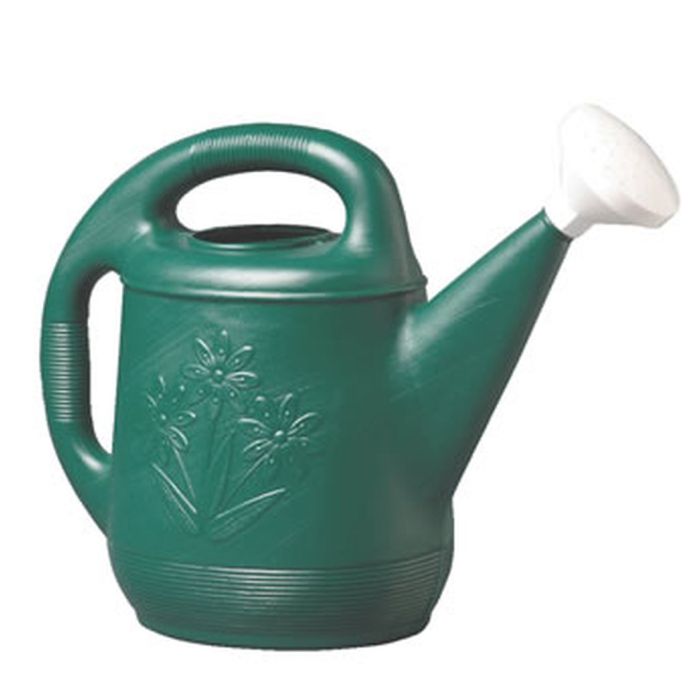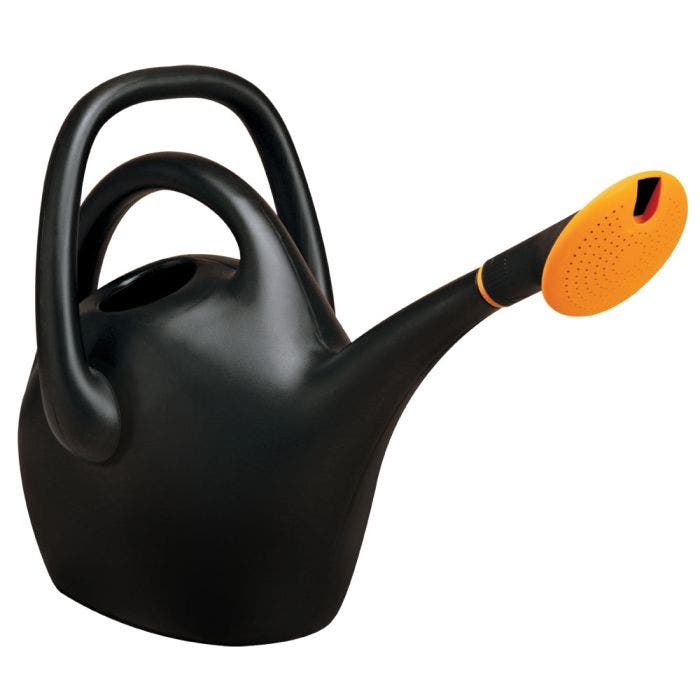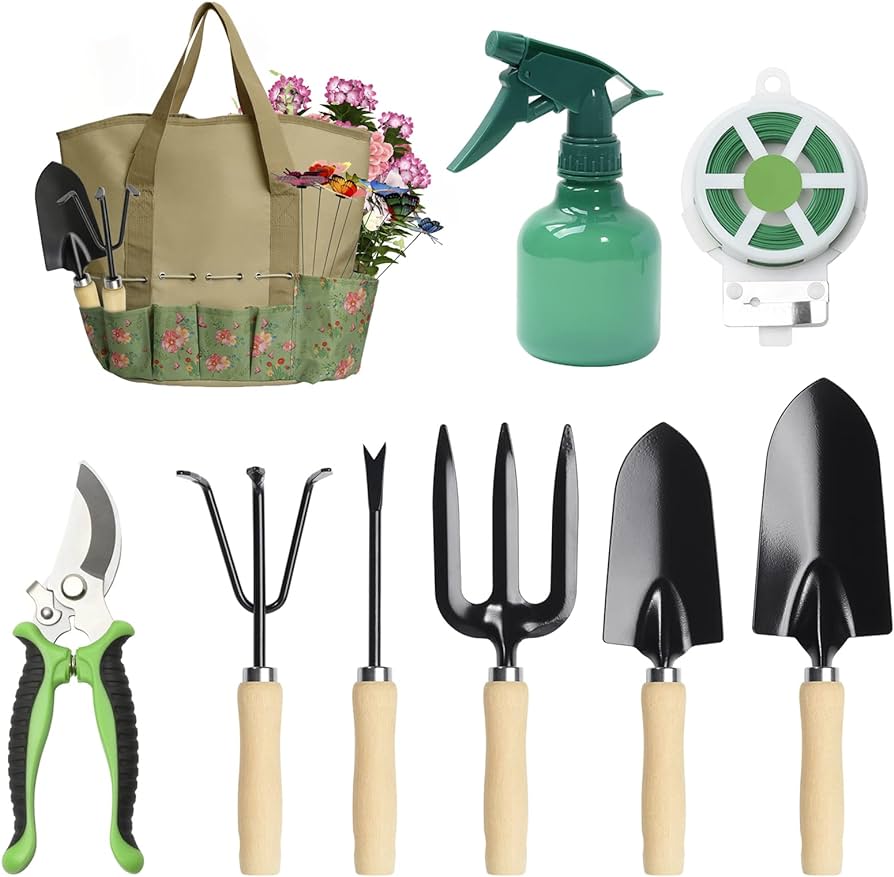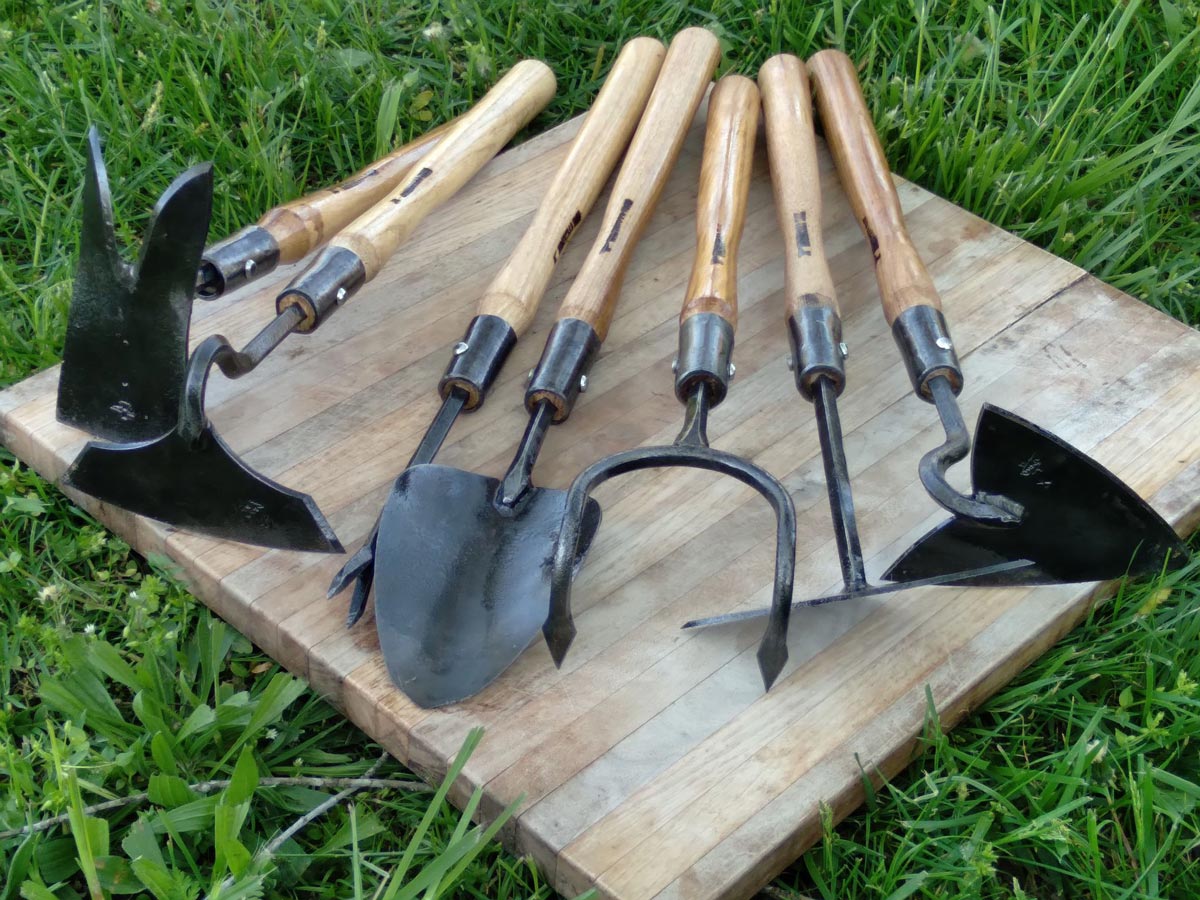
Maximizing Efficiency with a 3 Gallon Watering Can
Choosing the Right 3 Gallon Watering Can
When shopping for a 3 gallon watering can, consider its design and material. Look for ergonomic features that make it comfortable to carry and pour. Metal cans are durable but may be heavier, while plastic ones are lightweight but might not last as long. Ensure the can has a well-designed spout for accurate pouring, and check if it comes with a detachable rose for gentle watering. Choose a can with a sturdy handle that won’t strain your hand. Remember that balance is key: a full 3 gallon can gets quite heavy, so it should feel stable when lifted. Steer clear of cans with seams or weak joints that might leak. Lastly, consider the aesthetic appeal if you plan to display it in your garden. Pick a can that suits your style and meets your gardening needs.
Benefits of Using a 3 Gallon Watering Can
Using a 3 gallon watering can offers key benefits for gardeners and plant enthusiasts. The size provides ample water for multiple plants, reducing the need for frequent refills. With a larger capacity, you can water your garden more efficiently, saving you time and effort. This can is ideal for deep watering, encouraging strong root growth by allowing moisture to penetrate deeper into the soil.
The extra volume also helps maintain a consistent watering routine, which is essential for plant health. Consistency in watering promotes steady growth and can prevent stress from under or over-watering. Additionally, with a 3 gallon can, you have the flexibility to add liquid fertilizers or plant food, mixing it directly with the water for an even distribution. This can lead to better nutrient absorption and healthier plants.
A 3 gallon watering can might seem bulky, but the benefits of fewer trips back to the faucet are clear. It’s a practical choice for those with larger gardens or the desire to minimize labor during their gardening tasks. Choose a 3 gallon can to enjoy these advantages and keep your green space flourishing. Remember to look for cans with features that cater to comfort and ease of use.
Optimal Watering Techniques with a 3 Gallon Can
To water effectively with a 3 gallon watering can, start by planning your route. Begin with plants farthest from your water source and work your way back. This prevents unnecessary trips and saves time. Fill your can to a level that’s manageable. For some, a full can may be too heavy, so adjust the water volume to suit your strength.
Water plants at their base rather than from above. Directing the water flow at the root zone reduces evaporation and leaf wetness, which can lead to fungi. Use a slow and steady pour to avoid soil erosion or disturbing the plant roots. If your can has a rose attachment, use it for delicate plants that require gentler watering.
Early morning or late afternoon are the best times to water. These hours allow the water to soak in before the high heat of day increases evaporation. Moreover, watering in cooler temperatures helps prevent shock to the plants.
Finally, establish a regular watering schedule. Consistent watering helps plants grow strong and avoid the stress of drying out or being overwatered. With your 3 gallon watering can, this routine becomes less burdensome as you’ll be making fewer trips to refill.
Caring for Your 3 Gallon Watering Can
To make sure your 3 gallon watering can lasts, proper care is essential. Keep it clean by regularly rinsing it out with water, especially if you use it for mixing fertilizers or plant food solutions. This prevents any residue build-up that could clog the spout or rose attachment.
Store your watering can in a dry place to prevent rusting or damage, especially important for metal cans. For plastic watering cans, keep them out of direct sunlight when not in use to avoid UV damage.
Check for leaks or wear regularly. If you find a small hole in a metal can, you may be able to patch it as a temporary fix. For plastic cans, a strong adhesive might work, but consider replacing the can if the damage is significant.
Treat any moving parts, like hinges on the handle or the rose attachment, with care. Lubricate them as needed to keep them functioning smoothly. Be sure to empty the watering can completely before storing it to avoid unnecessary stress on the can from the weight of the water.
By maintaining your 3 gallon watering can properly, you’ll ensure its longevity and performance in keeping your garden green and healthy.
Accessories to Enhance Your Watering Can Experience
To maximize your gardening with a 3 gallon watering can, consider adding useful accessories. These can make your watering more efficient and enjoyable. Start with a watering can rose attachment. This tool spreads water evenly, perfect for delicate plants and seedlings. It also minimizes soil disruption. Next, pick up a watering can holder. This device saves space and keeps your can accessible and organized. A long-reach nozzle is another smart addition. It extends your reach and allows you to water hard-to-access areas. If you prefer precise watering, a spout with a flow control valve is handy. It helps manage water volume and reduces waste. For anyone mixing nutrients or plant food in their can, measuring tools are essential. Use a measuring cup or scoop for accurate portions. Some gardeners add a carrying strap to their can. It eases the load on your arms and back, especially when the can is full. Lastly, decorative covers are available. They protect your can from the elements and add a touch of style to your garden tools. These accessories can enhance your gardening and help your 3 gallon watering can serve you better.
Common Mistakes to Avoid When Using a 3 Gallon Can
Using a 3 gallon watering can is straightforward, but there are still errors to dodge. Avoid the most common missteps to maintain a healthy garden and a functional tool.
First, don’t overfill the can. It may be tempting to use its full capacity. Remember, water is heavy. Carrying too much can strain your back and make pouring less controlled. It’s better to fill the can to a weight you can manage comfortably.
Second, avoid watering in the heat of the day. This often leads to evaporation before the water reaches the plant roots. Aim for early morning or late afternoon for the best results.
Third, don’t ignore the pour technique. Watering plants from above can encourage disease. Instead, direct water close to the soil, near the plant base. This method targets the roots and preserves plant health.
Additionally, don’t neglect regular maintenance of your can. Clean it after use, especially if you mix in fertilizers. This prevents clogs and preserves the condition of the can.
Lastly, resist the urge to use a powerful jet. This can disturb the soil and harm plant roots. A gentle watering approach is more effective. If it has an attachment, use the rose to distribute water evenly.
By avoiding these common mistakes, you ensure your 3 gallon watering can is an asset to your gardening routine.
Creative Uses for a 3 Gallon Watering Can Beyond Plants
A 3 gallon watering can is not just for plants. It can serve multiple uses around your home and garden. Here are some creative ways to utilize your watering can beyond watering plants:
- Water Transport: Carry water to areas without a hose or faucet. This is handy for filling birdbaths or topping up a pet’s water bowl.
- Mixing Solutions: Use the can to mix and dispense homemade cleaning solutions for outdoor furniture and decks.
- Garden Tool Cleaner: After gardening, fill the can with water and use it to rinse soil off tools.
- Kid’s Play: Children can use it for outdoor water play, teaching them about pouring and measuring.
- Cool Down: Sprinkle water to cool down hot surfaces like patios or decks in the summer.
- Compost Tea Distributor: If you make compost tea for your garden, the can is perfect for applying it to your soil.
- Water Weight: Fill the can and use it as a weight for fitness exercises or to hold down objects on windy days.
- Decorative Piece: When not in use, it can be an aesthetic element in the garden or patio.
These inventive applications show the 3 gallon watering can’s versatility. From practical uses to creative solutions, this garden staple can do much more than keep your plants hydrated.
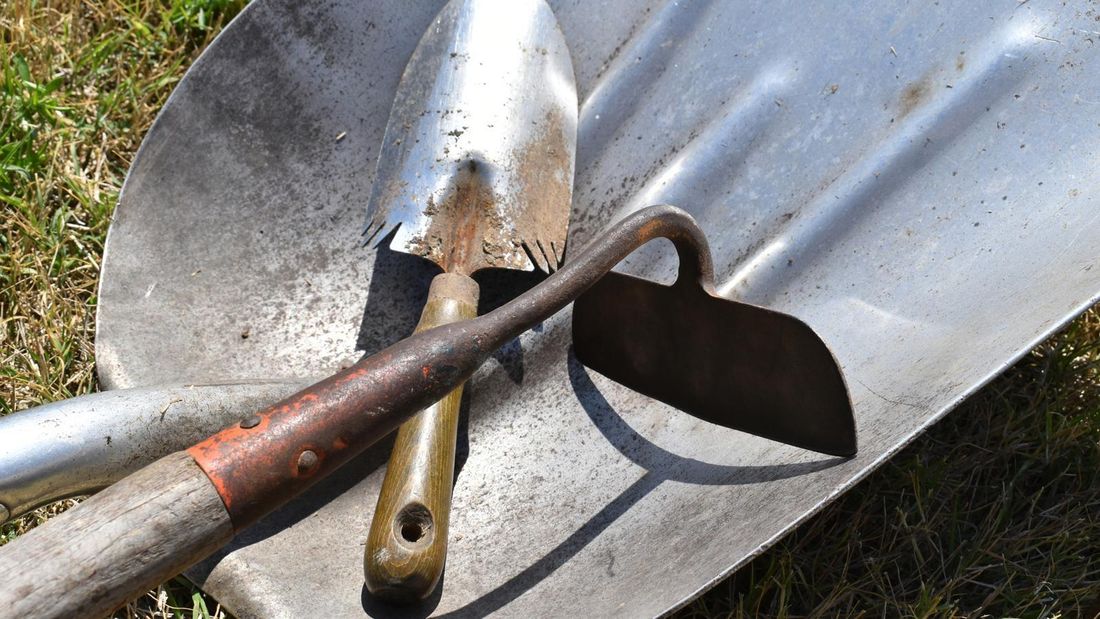
Maximizing Longevity and Efficiency in Gardening Equipment Management
The Organizational Strategist
Creating a Systematic Approach to Tool Storage
For the meticulous gardener, knowing how to store garden tools is more than just a matter of convenience—it’s about creating a systematic approach to tool storage that maximizes efficiency and minimizes clutter. Picture this: a well-organized tool shed or storage area, with each tool carefully arranged and easily accessible. This level of organization not only streamlines gardening tasks but also prolongs the lifespan of tools by protecting them from damage and deterioration.
The first step in mastering the art of tool storage is to declutter and assess your inventory. Take inventory of all your garden tools and assess their condition. Discard any damaged or obsolete tools, and prioritize those that are essential for your gardening needs. Once you have a clear picture of your tool collection, it’s time to create a storage system that works for you.
Consider the layout of your garden space and how you use your tools. Designate specific areas for different types of tools, such as a rack for shovels and rakes, hooks for hand tools, and shelves for smaller items like gloves and pruning shears. By organizing your tools based on function and frequency of use, you can ensure that everything has its place and is easily accessible when needed.
Invest in quality storage solutions that are designed specifically for garden tools. Look for durable materials like metal or heavy-duty plastic that can withstand outdoor conditions. Wall-mounted racks, pegboards, and tool sheds are all excellent options for storing garden tools efficiently and keeping them protected from the elements.

The Space-Saving Innovator
Maximizing Efficiency in Limited Spaces
In today’s world where space is at a premium, knowing how to store garden tools efficiently is essential for maximizing the utility of limited outdoor areas. Whether you have a small backyard garden or a balcony oasis, there are creative storage solutions that can help you make the most of your space while keeping your tools organized and easily accessible.
One space-saving strategy is to utilize vertical storage options. Wall-mounted racks, pegboards, and shelving units can help you maximize vertical space while keeping your tools neatly organized and within reach. Hanging baskets or buckets are also great for storing smaller tools and accessories while freeing up valuable floor space.
Another innovative storage solution is to repurpose everyday items for garden tool storage. For example, a sturdy wooden pallet can be transformed into a vertical garden tool rack by attaching hooks or pegs to hang your tools. Similarly, old wooden crates or baskets can be repurposed as stylish storage containers for smaller gardening items like gloves, seeds, and hand trowels.
If you’re short on outdoor space altogether, consider investing in portable storage solutions that can be easily moved and stored when not in use. Wheeled tool carts, storage benches with built-in compartments, and collapsible storage containers are all great options for maximizing efficiency in small outdoor spaces.
Lastly, don’t forget to take advantage of underutilized areas such as the back of doors or the sides of sheds. Over-the-door organizers, hooks, and hanging baskets can help you make the most of these spaces while keeping your tools organized and easily accessible.

The Weather-Resistant Planner
Protecting Tools from the Elements
In regions where weather can be unpredictable and harsh, knowing how to store garden tools effectively is essential for protecting them from the elements and prolonging their lifespan. Exposure to rain, snow, and extreme temperatures can cause rust, corrosion, and deterioration in garden tools, leading to decreased performance and shortened lifespans.
The first step in weather-resistant tool storage is to choose the right materials for your storage solutions. Opt for durable, weather-resistant materials like metal, heavy-duty plastic, or treated wood that can withstand outdoor conditions without deteriorating. Avoid storing tools in cardboard boxes or containers that can easily get damaged by moisture and humidity.
Invest in storage solutions that provide adequate protection from the elements. Look for tool sheds, storage cabinets, or lockable outdoor storage boxes that are designed to keep your tools dry and secure. Consider adding weatherproof seals or gaskets to doors and lids to prevent moisture from seeping in.
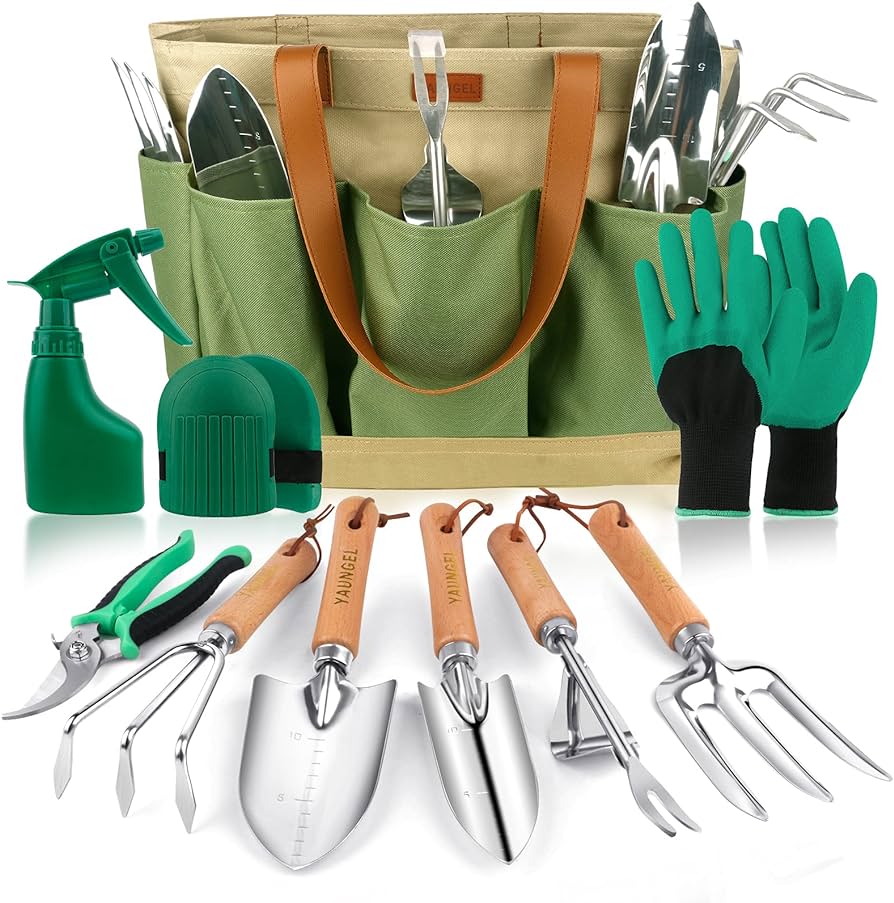
The Safety-Conscious Gardener
Preventing Accidents and Injuries
For the safety-conscious gardener, knowing how to store garden tools properly is essential for preventing accidents and injuries in the garden. Sharp tools, heavy equipment, and hazardous chemicals are all common features of a gardener’s toolkit, and proper storage is key to keeping them out of harm’s way and away from curious hands.
The first step in safety-conscious tool storage is to designate a secure storage area that is out of reach of children and pets. Lockable tool sheds, storage cabinets, or high shelves are all great options for keeping sharp tools and hazardous chemicals safely stored away when not in use.
Invest in storage solutions that are designed specifically for garden tools and equipment. Look for racks, shelves, and cabinets that have built-in safety features like locking mechanisms or childproof latches. Consider storing sharp tools like pruning shears and saws in protective cases or sheaths to prevent accidental cuts and injuries.
When storing chemicals and pesticides, always follow manufacturer instructions and store them in their original containers with secure lids. Keep them on high shelves or in locked cabinets to prevent accidental ingestion or exposure to pets and wildlife.

The Sustainable Gardener
Eco-Friendly Storage Solutions for Garden Tools
For the eco-conscious gardener, knowing how to store garden tools in an environmentally friendly way is essential for minimizing waste and reducing their carbon footprint. Traditional storage solutions like plastic bins and containers may be convenient, but they can contribute to plastic pollution and environmental degradation if not disposed of properly.
Instead, opt for eco-friendly storage solutions that are made from sustainable materials like bamboo, reclaimed wood, or recycled plastic. These materials are renewable, biodegradable, and less harmful to the environment than traditional plastics, making them a more sustainable choice for storing garden tools.
Consider repurposing items from around your home or garden for tool storage. Old wooden crates, baskets, and containers can be easily repurposed into stylish and functional storage solutions for garden tools. Not only does this reduce waste by giving new life to old items, but it also adds a unique and personalized touch to your gardening space.

Revitalizing Your Gardening Tools for Maximum Efficiency
The Craftsman’s Approach
Elevating Tools to Artisanal Precision
For the discerning gardener, sharpening garden tools is not merely a maintenance task but an art form—a craft that elevates ordinary implements to the realm of artisanal precision. Picture this: a worn-out pair of pruning shears, their blades dulled from seasons of hard work. In the hands of a skilled craftsman, these shears undergo a transformation, their edges honed to a razor-sharpness that effortlessly slices through branches with surgical precision.
Sharpening garden tools is a labor of love—a meticulous process that requires patience, skill, and attention to detail. It’s not just about restoring a tool to its former glory; it’s about enhancing its performance and ensuring that it operates at peak efficiency. For the craftsman gardener, sharpening garden tools is a ritual—a time-honored tradition that celebrates the timeless artistry of cultivation.
The process of sharpening garden tools is a testament to the gardener’s dedication to their craft. It’s a commitment to excellence—a refusal to settle for mediocrity. By sharpening their tools with care and precision, gardeners not only ensure the longevity of their equipment but also elevate their gardening experience to new heights of sophistication and refinement.

The Efficiency Guru
Maximizing Productivity Through Sharpness
In the fast-paced world of gardening, efficiency is key, and sharpening garden tools is essential for maximizing productivity. Imagine trying to prune bushes with dull shears or dig through compacted soil with a blunt shovel—it’s a frustrating and time-consuming endeavor. By sharpening their tools regularly, gardeners ensure that they can work more efficiently, saving time and energy in the process.
Sharpening garden tools is not just about maintaining them; it’s about revitalizing them—breathing new life into tired implements and restoring them to their full potential. When a tool is sharp, it cuts through tasks with ease, making gardening a more enjoyable and satisfying experience. By investing time in sharpening their tools, gardeners set themselves up for success, ensuring that they have the right tools for the job whenever they’re needed.
Moreover, sharp tools are safer tools. Dull implements require more force to use, increasing the risk of slips and accidents. By keeping their tools sharp, gardeners reduce the likelihood of injuries and create a safer working environment for themselves and their fellow enthusiasts. In the garden, as in life, sharpness is synonymous with efficiency, productivity, and safety.

The Precision Enthusiast
Cultivating Gardens with Surgical Precision
In the world of gardening, precision is paramount, and sharpening garden tools is essential for cultivating gardens with surgical precision. Whether it’s pruning delicate flowers or trimming intricate topiaries, gardeners rely on sharp tools to achieve the precise cuts necessary for shaping and sculpting their green spaces.
Sharpening garden tools is not just about sharpening blades; it’s about sharpening skills. It’s a practice that hones the gardener’s ability to wield their tools with finesse and accuracy, achieving results that are both beautiful and functional. With sharp tools in hand, gardeners can navigate the intricate dance of pruning, trimming, and shaping with confidence and precision, transforming their gardens into works of art.
Moreover, sharp tools promote plant health by minimizing damage and stress during pruning and trimming. Clean, precise cuts heal more quickly, reducing the risk of disease and promoting vigorous growth. By sharpening their tools regularly, gardeners ensure that they can provide the care and attention their plants need to thrive, creating a healthier and more vibrant garden in the process.
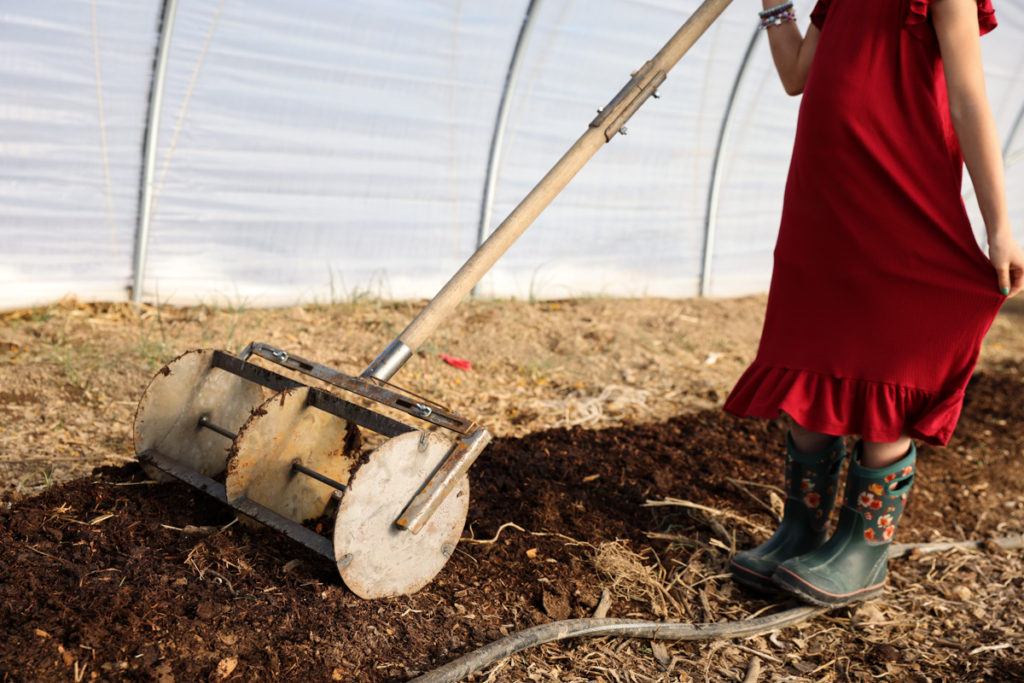
The Timeless Tradition Keeper
Honoring the Craftsmanship of Generations Past
Gardening is a timeless tradition that has been passed down through generations, and sharpening garden tools is a way of honoring this legacy. For many gardeners, their tools are more than just implements—they are heirlooms that carry memories of gardens past. By meticulously sharpening and caring for these tools, gardeners preserve the craftsmanship of generations past and ensure that their knowledge and traditions are passed down to future generations.
The act of sharpening garden tools is a ritual—a time-honored tradition that connects gardeners to the history of their craft. It’s a way of paying tribute to the skill and ingenuity of those who came before, who crafted these tools with care and precision. By sharpening their tools with reverence and respect, gardeners keep the spirit of gardening alive and uphold the traditions that have shaped their craft for centuries.
Moreover, sharpening garden tools is a way of preserving the integrity of the tools themselves. Over time, tools can become worn and dull from years of hard work. By sharpening them regularly, gardeners ensure that they remain in optimal condition, ready to perform at their best whenever they’re needed. In this way, the act of sharpening garden tools becomes a labor of love—a tangible expression of the gardener’s commitment to their craft and their connection to generations past.
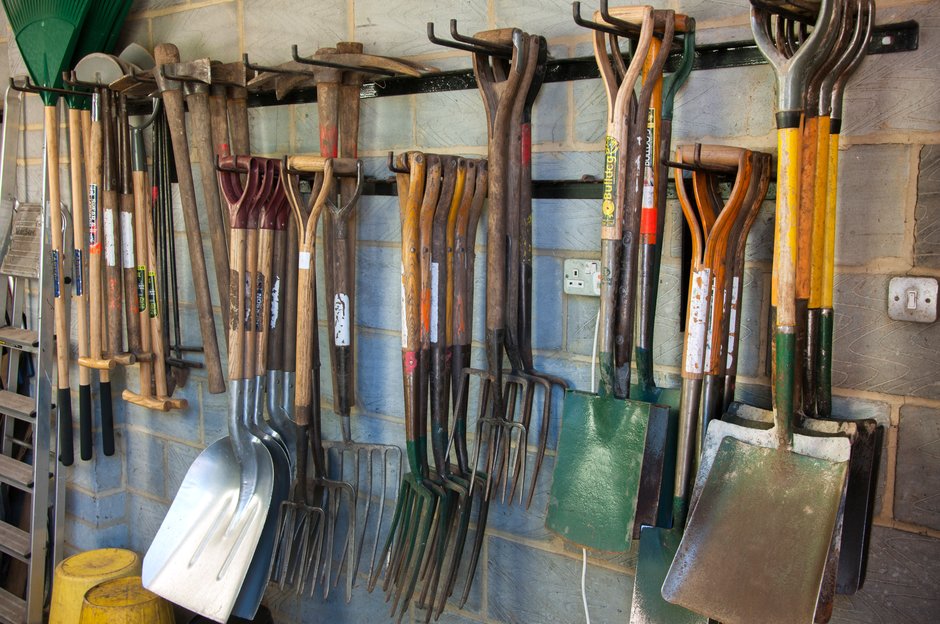
The Eco-Friendly Gardener
Sustainable Practices for a Greener Garden
In today’s world, sustainability is more important than ever, and sharpening garden tools is an eco-friendly practice that contributes to a greener garden. When a tool is sharp, it requires less force to use, reducing the energy expended by the gardener. This not only saves time and effort but also minimizes the environmental impact of gardening.
Moreover, sharp tools produce cleaner cuts, which heal more quickly and reduce the risk of disease in plants. This means less need for chemical interventions, such as pesticides and fungicides, which can harm beneficial insects and pollinators. By sharpening their tools regularly, gardeners create a healthier and more sustainable gardening environment, promoting biodiversity and ecological balance in their gardens.
In addition, sharpening garden tools extends their lifespan, reducing the need for replacements and conserving resources. When tools are well-maintained and sharp, they perform better and last longer, reducing waste and minimizing the gardener’s environmental footprint. By incorporating the practice of sharpening garden tools into their gardening routine, enthusiasts can enjoy a more sustainable and environmentally friendly approach to gardening, creating a greener garden for themselves and future generations to enjoy.
In conclusion, sharpening garden tools is more than just a maintenance task—it’s a practice that embodies craftsmanship, efficiency, precision, tradition, and sustainability. By sharpening their tools regularly, gardeners ensure that they can cultivate their gardens with precision and finesse, creating beautiful and sustainable green spaces that bring joy and beauty to their lives and the world around them.

Enhancing Gardening Experience Through Proper Maintenance of Garden Tools
The Gardener’s Essential Task
Nurturing Tools for Bountiful Harvests
In the realm of gardening, cleaning garden tools is an essential task that goes hand in hand with nurturing plants for bountiful harvests. Gardeners understand the significance of maintaining their tools in pristine condition, just as they do with their plants. Picture this: after a day of tending to the garden, the sun sets, and the tools are carefully gathered for cleaning. It’s not just about removing dirt and debris; it’s about ensuring that each tool is ready to perform at its best the next time it’s needed.
Cleaning garden tools is more than just a chore; it’s a ritual that honors the craftsmanship and functionality of each implement. From shovels to pruning shears, every tool has its role to play in the garden’s ecosystem. Neglecting to clean them not only diminishes their effectiveness but also risks spreading diseases between plants. For the dedicated gardener, cleaning garden tools is a labor of love—a tangible expression of their commitment to cultivating a thriving garden.
The process of cleaning garden tools is not merely about hygiene but also about preservation. Tools that are left dirty or exposed to the elements can deteriorate over time, leading to rust, corrosion, and ultimately, a shortened lifespan. By cleaning and maintaining their tools regularly, gardeners ensure that they remain in optimal condition, ready to tackle any task in the garden with efficiency and precision.

The Environmental Stewardship
Sustaining Gardens and Ecosystems
In today’s world, environmental stewardship is more important than ever, and cleaning garden tools plays a crucial role in sustaining gardens and ecosystems. Gardeners who prioritize the cleanliness of their tools contribute to a healthier environment by preventing the spread of pests and diseases. When tools are left dirty, they can harbor harmful pathogens that can wreak havoc on plants and disrupt the delicate balance of the garden ecosystem.
Furthermore, cleaning garden tools reduces the need for harsh chemicals that can harm beneficial insects and pollinators. By maintaining their tools in optimal condition, gardeners minimize their environmental impact and create a safer and more sustainable gardening environment. This commitment to eco-friendly practices not only benefits the garden but also contributes to the overall health of the planet.
By incorporating the practice of cleaning garden tools into their gardening routine, enthusiasts can significantly reduce their ecological footprint. This simple yet effective measure prevents the need for excessive chemical interventions and promotes a more harmonious relationship between gardeners and the environment they cultivate.

The Efficiency Seeker
Maximizing Productivity in the Garden
Efficiency is key in the world of gardening, and cleaning garden tools is essential for maximizing productivity. Imagine trying to plant seeds with a dirty trowel or prune bushes with rusty shears—it’s a recipe for frustration and wasted time. By keeping their tools clean and well-maintained, gardeners ensure that they can work more efficiently, saving time and energy in the process.
Cleaning garden tools is not just about removing dirt and debris; it’s also about preventing rust and corrosion that can damage the tools over time. By regularly cleaning and oiling their tools, gardeners prolong their lifespan and reduce the need for costly replacements. This proactive approach to tool maintenance pays off in the long run, allowing gardeners to spend less time on repairs and more time enjoying their garden.
Efficiency in gardening extends beyond the immediate tasks at hand. Well-maintained tools not only make individual tasks easier but also contribute to a more streamlined gardening experience overall. By investing time in cleaning and maintaining their tools, gardeners set themselves up for success, ensuring that they have the right tools for the job whenever they’re needed.

The Health Advocate
Protecting Plants and Gardeners Alike
In the realm of gardening, cleanliness is essential for protecting both plants and gardeners. Dirty tools can harbor harmful pathogens that can spread diseases and pests throughout the garden. By cleaning garden tools regularly, gardeners can prevent the spread of these pathogens and protect the health of their plants.
Additionally, clean tools reduce the risk of injury to gardeners. Rusty or dull tools can cause cuts, puncture wounds, and strains, leading to discomfort and potentially serious injuries. By maintaining their tools in good condition, gardeners create a safer working environment for themselves and reduce the risk of accidents in the garden.
The health benefits of cleaning garden tools extend beyond physical well-being to the overall health and vitality of the garden itself. Clean tools promote plant health by preventing the spread of diseases and pests, ensuring that the garden remains a vibrant and thriving ecosystem. By prioritizing the cleanliness of their tools, gardeners not only protect themselves but also safeguard the well-being of their plants, creating a healthier and more resilient garden in the process.
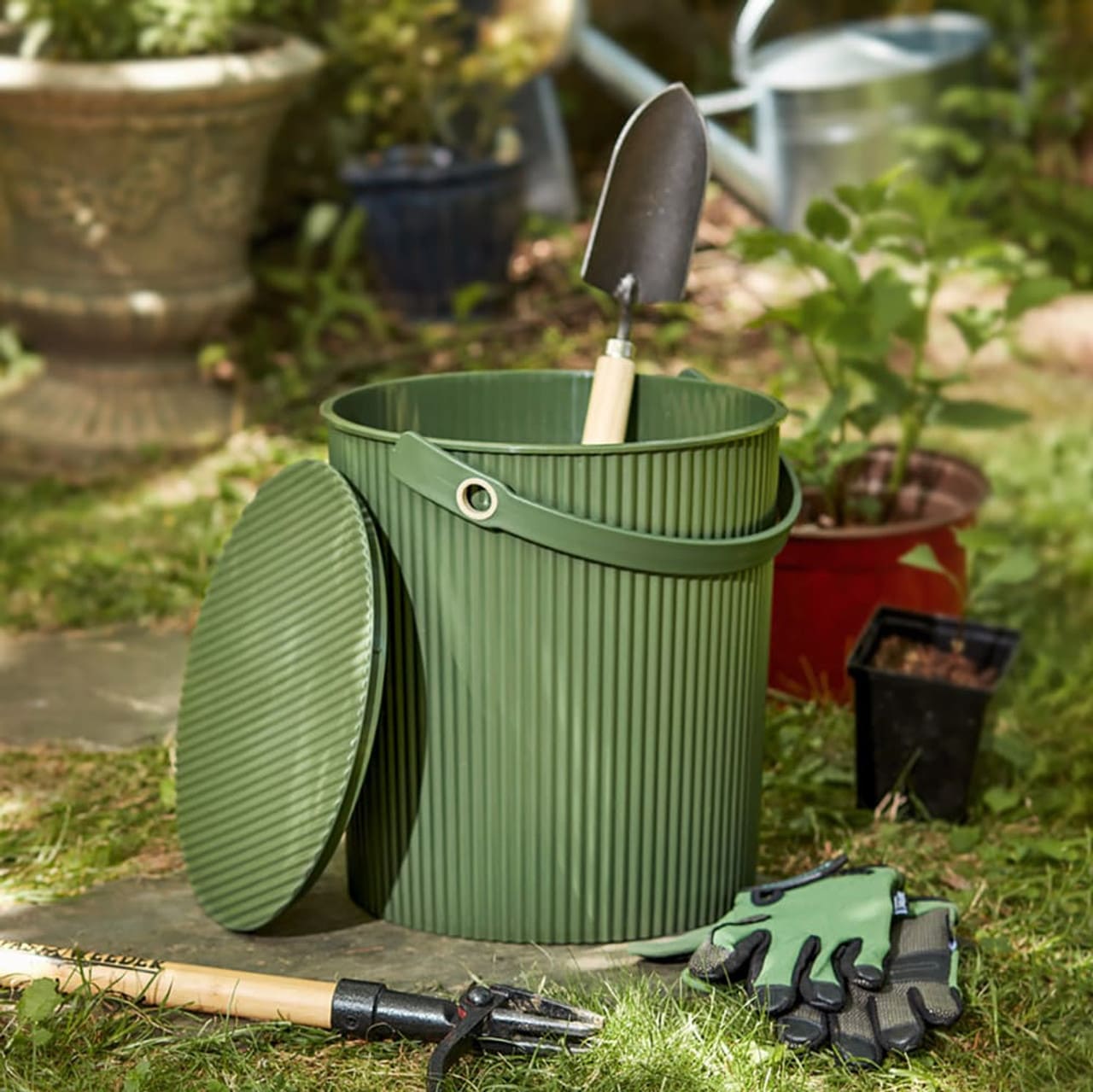
The Tradition Preserver
Honoring the Legacy of Gardening
Gardening is a timeless tradition that has been passed down through generations, and cleaning garden tools is a way of honoring this legacy. For many gardeners, their tools are more than just implements—they are heirlooms that carry memories of gardens past. By meticulously cleaning and caring for these tools, gardeners preserve the legacy of those who came before them and ensure that their knowledge and traditions are passed down to future generations.
Cleaning garden tools is a way of connecting with the history of gardening and paying tribute to the craftsmanship of the past. Whether it’s a vintage hand cultivator or a cherished pair of pruning shears, each tool has its own story to tell. By preserving these tools, gardeners keep the spirit of gardening alive and uphold the traditions that have shaped their craft for centuries.
In conclusion, cleaning garden tools is essential for enhancing the gardening experience in multiple ways. From ensuring the efficiency of tasks to protecting the environment and honoring traditions, maintaining clean tools is a practice that benefits both gardeners and the gardens they tend. By prioritizing the cleanliness of their tools, gardeners can enjoy a more productive, sustainable, and fulfilling gardening experience.

A Comprehensive Guide to Maintaining Your Gardening Tools
The Gardener’s Ritual
Honoring the Tools of the Trade
For avid gardeners, clean garden tools are more than just a necessity; they are a ritual that honors the tools of their trade. Picture this: the scent of fresh soil in the air, the sun gently kissing your skin, and the rhythmic sound of pruning shears snipping away. Every seasoned gardener knows that the key to a thriving garden lies not only in the seeds planted but also in the maintenance of their tools. Keeping garden tools clean is a sacred practice, akin to tending to the earth itself. It signifies a gardener’s commitment to their craft and ensures the longevity of their trusted companions.
Gardening is not merely a hobby but a way of life for many enthusiasts. From the moment they step into their garden, they are greeted by a symphony of colors, textures, and scents that awaken their senses and nourish their soul. In this sanctuary of greenery, their tools are their allies, helping them sculpt the landscape and coax life from the soil. To neglect the maintenance of these tools would be akin to disrespecting the very essence of gardening itself.
Picture a gardener meticulously cleaning their tools after a day’s work, wiping away dirt and debris with care and precision. Each tool is inspected with a discerning eye, ensuring that no rust or grime is left behind. This act of cleansing is not merely about hygiene; it is a form of gratitude—a way of saying thank you to the tools that help bring their garden to life. It is a moment of quiet reverence, a time to reflect on the symbiotic relationship between gardener and tool, and to honor the timeless tradition of cultivation.

The Environmental Advocate
Sustainability Starts with Clean Tools
In an era where environmental consciousness is paramount, maintaining clean garden tools goes beyond mere upkeep; it is a statement of sustainability. The carbon footprint of gardening extends beyond the plants themselves to the equipment used. By regularly cleaning and caring for garden tools, enthusiasts can minimize waste and prolong the lifespan of their equipment. From hand trowels to lawnmowers, every tool plays a part in cultivating a greener future. Embracing the practice of cleaning garden tools not only nurtures the garden but also nurtures a healthier planet for generations to come.
Consider the impact of rusty, neglected garden tools on the environment. When left untreated, rust can corrode metal components, rendering tools unusable and destined for the landfill. This not only contributes to waste but also necessitates the production of new tools, further depleting finite resources. By contrast, a commitment to cleaning and maintaining garden tools reduces the need for replacement and minimizes the environmental footprint associated with gardening.
Moreover, clean garden tools promote eco-friendly gardening practices by reducing the need for harsh chemicals. When tools are properly maintained, they are more effective at their job, requiring less intervention from synthetic fertilizers and pesticides. This not only benefits the environment but also creates a safer and healthier garden ecosystem for plants, animals, and humans alike.

The Efficiency Expert
Streamlining Garden Maintenance
In the realm of gardening, time is of the essence, and efficiency is key. Clean garden tools are not just a matter of hygiene but a strategic approach to maximizing productivity. Imagine trying to prune bushes with rusty shears or dig through compacted soil with a dull shovel—it’s a recipe for frustration and wasted energy. By regularly cleaning and sharpening their tools, gardeners ensure seamless workflow and optimal results. It’s a small investment of time that pays dividends in the form of a well-maintained garden and a more enjoyable gardening experience.
Efficiency is the cornerstone of successful gardening, and clean tools are essential for achieving this goal. Consider the time saved by using sharp, clean pruning shears to trim back overgrown branches, or the ease of planting seeds with a well-maintained trowel. Clean garden tools not only make tasks easier but also more enjoyable, allowing gardeners to focus on the creative aspects of their craft rather than struggling with inadequate equipment.
Furthermore, maintaining clean garden tools is a proactive measure that prevents downtime and costly repairs. Regular cleaning and lubrication prevent rust and corrosion, extending the lifespan of tools and reducing the need for replacements. By incorporating tool maintenance into their routine, gardeners can avoid the frustration of discovering a rusted shovel or a seized-up lawnmower when they’re ready to tackle their next gardening project.

The Health Enthusiast
Protecting Plants and People Alike
In the realm of gardening, health is paramount—for both plants and people. Clean garden tools play a crucial role in safeguarding against the spread of diseases and pests that can wreak havoc on a garden. Just as we wash our hands to prevent the spread of germs, gardeners must sanitize their tools to protect the health of their plants. Additionally, clean tools minimize the risk of injuries caused by rusty or blunt implements, ensuring a safer gardening environment for enthusiasts of all ages. Prioritizing the cleanliness of garden tools is not just about maintaining a pretty garden; it’s about nurturing a healthy ecosystem from the ground up.
Consider the consequences of using dirty garden tools in a garden. Soil-borne pathogens can hitch a ride on neglected tools, spreading diseases from plant to plant and decimating entire crops. By regularly cleaning and disinfecting their tools, gardeners can prevent the spread of these pathogens and protect the health of their plants. This simple act of hygiene can make the difference between a bountiful harvest and a disappointing season of crop failure.
Moreover, clean garden tools promote personal health and safety by reducing the risk of accidents and injuries. Rusty tools can cause cuts and puncture wounds, while dull implements can lead to strains and sprains from excessive force. By keeping their tools clean and well-maintained, gardeners create a safer gardening environment for themselves and their fellow enthusiasts, ensuring that everyone can enjoy the physical and mental benefits of tending to their garden without unnecessary risk.

The Heritage Keeper
Preserving Gardening Traditions
In a world that’s constantly evolving, there’s something deeply comforting about preserving traditions, especially in the realm of gardening. Clean garden tools represent more than just functional equipment; they embody a connection to heritage and a respect for the generations of gardeners who came before. Whether it’s a vintage hand cultivator passed down through the family or a cherished pair of pruning shears gifted by a mentor, these tools carry stories of gardens past. By meticulously cleaning and caring for these heirlooms, gardeners pay homage to the timeless art of cultivation and ensure that their legacy will endure for years to come.
Consider the stories that lie behind each garden tool, passed down through generations like precious heirlooms. The worn handle of a spade tells of countless hours spent turning soil, while the blade of a pair of shears bears the marks of years of careful pruning. These tools are not just objects but artifacts of a bygone era, each with its own history and significance. By preserving and maintaining these tools, gardeners honor the traditions of those who came before them and ensure that their wisdom and knowledge are not lost to time.
Moreover, the act of cleaning and caring for garden tools is a form of mindfulness—a way of connecting with the earth and with oneself. As gardeners tend to their tools, they become attuned to the rhythms of nature, the changing seasons, and the passage of time. It is a moment of quiet reflection, a chance to slow down and appreciate the simple pleasures of gardening. In this fast-paced world, the act of cleaning garden tools becomes a meditative practice—a way of grounding oneself in the present moment and finding solace in the beauty of the natural world.
In conclusion, clean garden tools are not just a practical necessity but a symbol of dedication, sustainability, efficiency, health, and tradition. Whether you’re a seasoned gardener or just starting out, embracing the practice of maintaining your tools will not only enhance your gardening experience but also contribute to a healthier, more beautiful world. So, pick up your rake, sharpen your shears, and embark on the journey of tending to your garden and your tools with love and care.
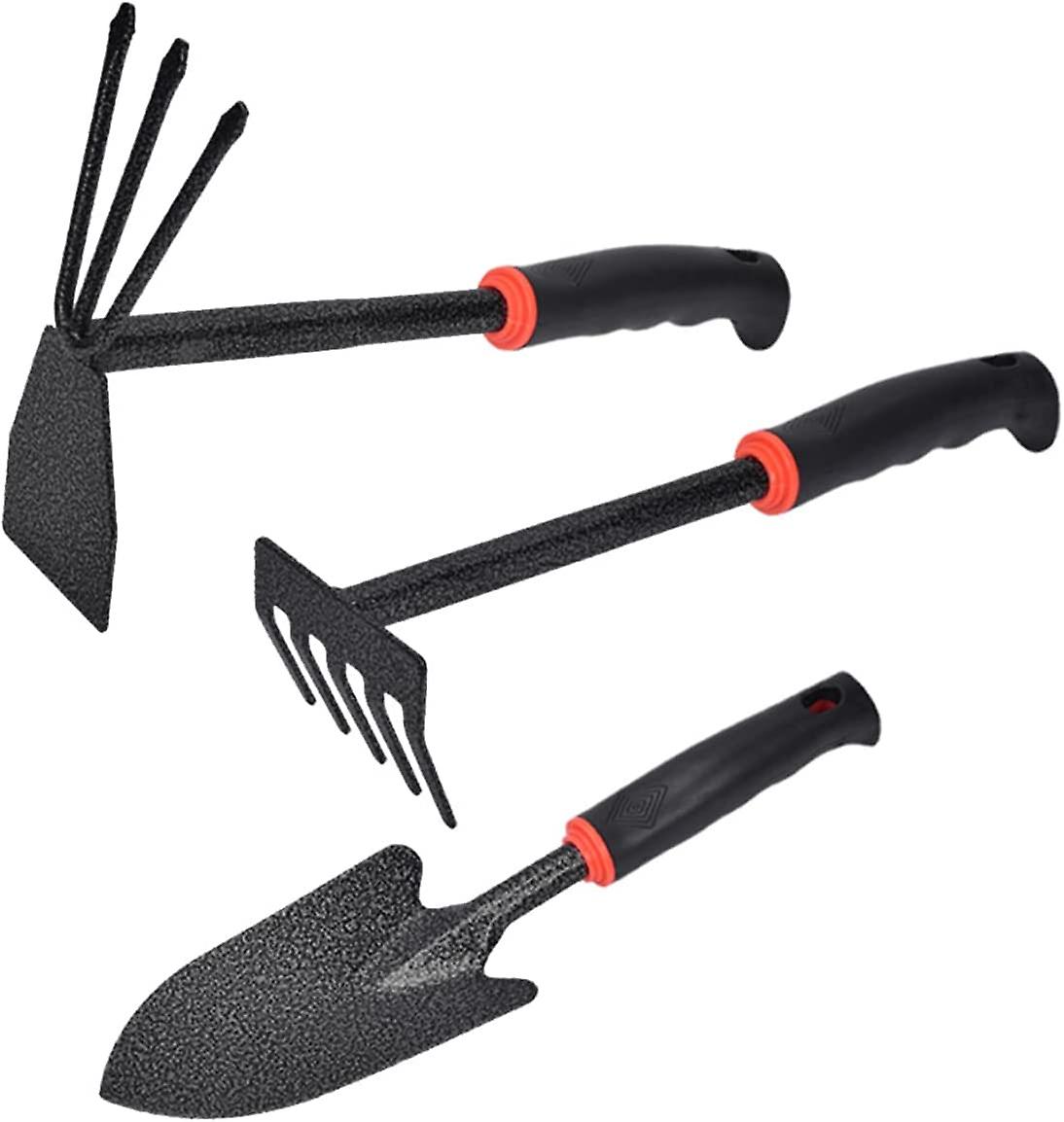
Reviving Your Tools: How to Clean Rusty Garden Tools
The Novice Gardener’s Introduction
A Beginner’s Guide to Rust Removal
For the novice gardener, confronting rusty garden tools can be intimidating, but with the right approach, it’s a manageable task. Learning how to clean rusty garden tools is essential for maintaining their functionality and prolonging their lifespan. Start by gathering all your rusty tools in one place, including shovels, trowels, pruners, and hoes. Assess the extent of rust on each tool, noting areas that require attention. Begin the cleaning process by scrubbing the rusted surfaces with a wire brush or steel wool to remove loose rust flakes and debris. Next, immerse the tools in a solution of white vinegar or a commercial rust remover, allowing them to soak for several hours or overnight. After soaking, scrub the tools again to loosen any remaining rust, then rinse them thoroughly with water and dry them completely.
Finally, apply a thin layer of oil or lubricant to prevent future rusting. With patience and persistence, even novice gardeners can successfully clean rusty garden tools and restore them to their former glory.
The novice gardener’s journey into rust removal begins with a sense of trepidation, unsure of where to start in the face of rusty garden tools. However, armed with determination and a willingness to learn, they embark on the process with eagerness. By gathering all their rusty tools and assessing the extent of rust on each one, they gain a clearer understanding of the task ahead. Armed with a wire brush or steel wool, they begin the cleaning process, gingerly scrubbing away at the rusted surfaces.

The Seasoned Gardener’s Expertise
Refining Rust Removal Techniques
For seasoned gardeners, dealing with rusty garden tools is a familiar challenge that they’ve mastered over the years. They understand the importance of proper maintenance in keeping their tools in top condition and are well-versed in effective rust removal techniques. To clean rusty garden tools, seasoned gardeners start by assessing the extent of rust on each tool and determining the best approach for removal. They may choose to use a wire brush, steel wool, or sandpaper to scrub away surface rust, depending on the severity of the rust buildup.
For more stubborn rust, they opt for chemical rust removers or homemade solutions like vinegar or lemon juice. After removing the rust, seasoned gardeners thoroughly clean and dry their tools before applying a protective coating to prevent future rusting. With their expertise and attention to detail, seasoned gardeners ensure that their rusty garden tools are restored to optimal condition, ready for another season of use in the garden.
The seasoned gardener’s approach to rust removal is characterized by years of experience and a deep understanding of their tools. They approach each rusty tool with a practiced eye, assessing the extent of rust and determining the most effective method for removal. Armed with a variety of tools and techniques, they tackle surface rust with a wire brush, steel wool, or sandpaper, carefully scrubbing away at the corroded areas.

The Eco-Conscious Gardener’s Sustainability
Natural Solutions for Rust Removal
For eco-conscious gardeners, learning how to clean rusty garden tools is an opportunity to incorporate sustainable practices into their gardening routine. These gardeners prioritize using natural and eco-friendly solutions to remove rust from their tools, minimizing their environmental impact. Instead of harsh chemical rust removers, eco-conscious gardeners opt for natural alternatives like vinegar, lemon juice, or baking soda, which are effective at breaking down rust without harmful toxins. They also choose biodegradable wire brushes or steel wool for scrubbing away surface rust, reducing their reliance on synthetic materials. After removing the rust, eco-conscious gardeners dispose of any waste responsibly and recycle materials whenever possible. By adopting eco-friendly rust removal techniques, these gardeners not only preserve the health of their garden but also contribute to the health of the planet.
The eco-conscious gardener approaches rust removal with a commitment to sustainability, seeking out natural and eco-friendly solutions to minimize their environmental impact. They eschew harsh chemical rust removers in favor of natural alternatives like vinegar, lemon juice, or baking soda, harnessing the power of nature to dissolve rust without harming the environment. Armed with biodegradable wire brushes or steel wool, they scrub away at the rusted surfaces, knowing that their tools will be free from harmful chemicals. As they work, they are mindful of their waste, disposing of any leftover materials responsibly and recycling whenever possible. By adopting eco-friendly rust removal techniques, these gardeners not only preserve the health of their garden but also contribute to the health of the planet, ensuring that their gardening practices are in harmony with nature.

The Practical Gardener’s Efficiency
Streamlining Rust Removal
In the fast-paced world of modern gardening, efficiency is key, and practical gardeners know how to clean rusty garden tools quickly and effectively. They understand that rusty tools can hinder productivity in the garden and prioritize restoring them to optimal condition efficiently. Practical gardeners start by assessing the extent of rust on each tool and determining the most efficient method for removal. They may choose to use a wire brush or steel wool for surface rust or opt for a chemical rust remover for more stubborn buildup.
To streamline the process, practical gardeners often clean multiple tools at once, maximizing their time and effort. After removing the rust, they thoroughly clean and dry their tools before applying a protective coating to prevent future rusting. By adopting an efficient approach to rust removal, practical gardeners ensure that their tools are always ready for action in the garden.
The practical gardener’s approach to rust removal is marked by a focus on efficiency and productivity, recognizing that time is of the essence in the fast-paced world of modern gardening. They begin by assessing the extent of rust on each tool, quickly determining the most effective method for removal. Armed with wire brushes, steel wool, and chemical rust removers, they tackle surface rust with speed and precision, wasting no time in restoring their tools to optimal condition.
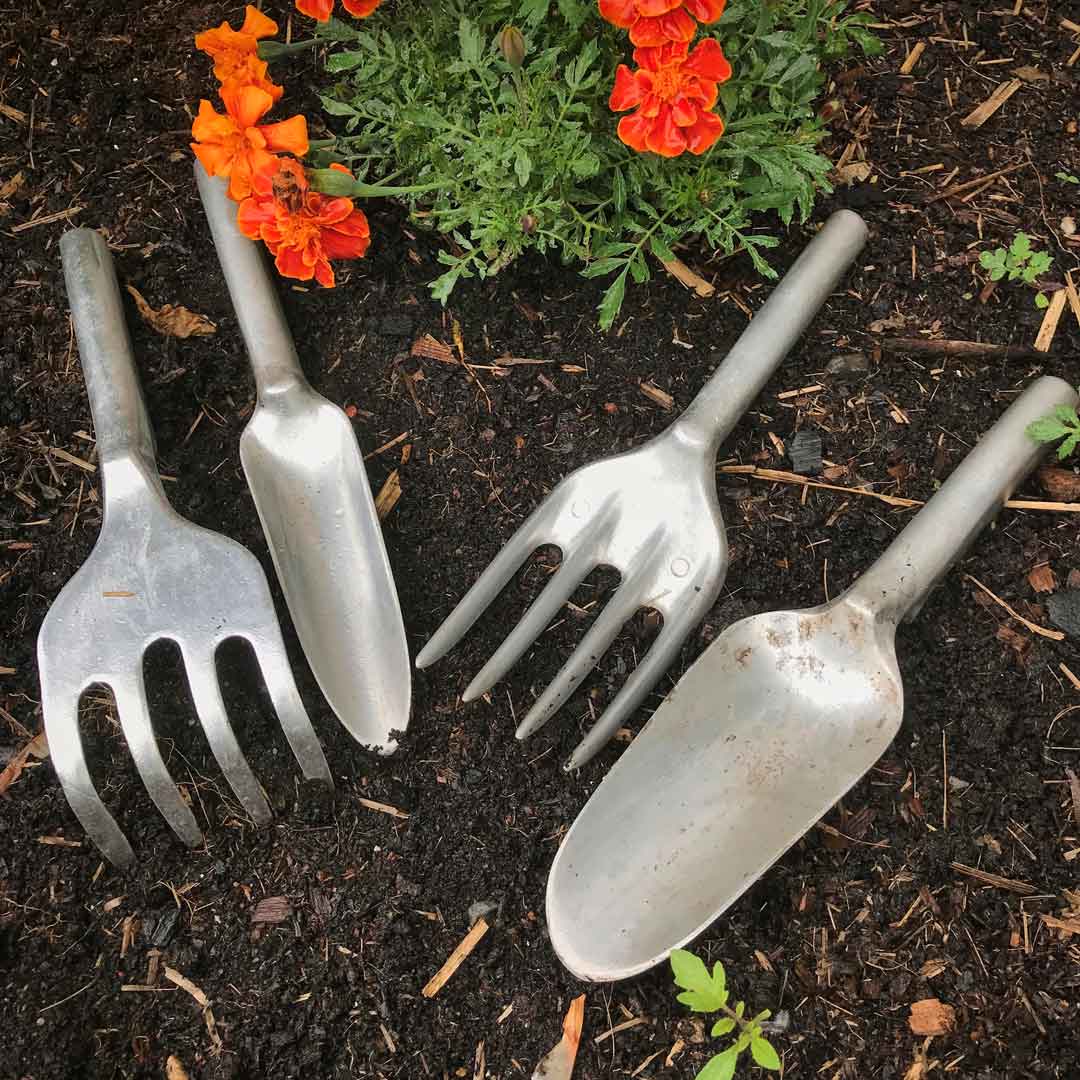
The Perfectionist Gardener’s Precision
Attaining Rust-Free Perfection
For the perfectionist gardener, cleaning rusty garden tools is not just about removing rust—it’s about restoring them to pristine condition with meticulous attention to detail. These gardeners take pride in their tools and go to great lengths to ensure they are rust-free and fully functional. To clean rusty garden tools, perfectionist gardeners start by carefully assessing the extent of rust on each tool and identifying the best method for removal. They may use a combination of wire brushes, steel wool, sandpaper, or chemical rust removers to achieve the desired results. After removing the rust, perfectionist gardeners meticulously clean and polish their tools, ensuring that every surface is free of rust and debris. They take their time, ensuring that no corner or crevice is overlooked in their quest for perfection.
Finally, they apply a protective coating to prevent future rusting and store their tools in a dry, well-ventilated area. By adopting this meticulous approach to rust removal, perfectionist gardeners ensure that their tools are always in perfect condition, ready for any task in the garden.
The perfectionist gardener approaches rust removal with a meticulous attention to detail and a commitment to achieving perfection. They begin by carefully assessing the extent of rust on each tool, examining every surface with a critical eye. Armed with an array of tools and techniques, they meticulously scrub away at the rusted surfaces, ensuring that no trace of rust or debris remains. As they work, they take their time, methodically cleaning and polishing each tool to perfection. They pay special attention to every corner and crevice, knowing that even the smallest speck of rust can compromise their efforts.

A Comprehensive Guide: How to Clean Garden Tools
The Novice Gardener’s Approach
Taking the First Steps
As a novice gardener, learning how to clean garden tools is a crucial step in nurturing a healthy garden. It may seem overwhelming at first, but with a few simple steps, you can keep your tools in top condition. Start by gathering all your tools in one place, including shovels, trowels, pruners, and hoes. Inspect each tool for dirt, rust, and debris, noting any signs of damage. Fill a bucket with warm, soapy water and use a stiff brush to scrub away dirt and grime from the surfaces of your tools. Rinse them thoroughly with clean water and allow them to air dry before storing them in a dry, well-ventilated area. Regular maintenance like this will extend the lifespan of your tools and ensure they perform their best in the garden.
For novice gardeners, the process of cleaning garden tools is not only about maintaining the tools themselves but also about cultivating good gardening habits. It’s an opportunity to learn about the tools they use and understand the importance of keeping them clean and functional. By starting with basic tools like shovels and trowels, novice gardeners can gradually build their confidence and skills in tool maintenance. As they become more familiar with the process, they may experiment with different cleaning techniques and products to find what works best for them. Through regular practice and dedication, novice gardeners can develop a routine for cleaning their tools that becomes second nature, ensuring that their gardening endeavors are always supported by well-maintained equipment.

The Seasoned Gardener’s Routine
Honing the Craft
For seasoned gardeners, cleaning garden tools is an integral part of their gardening routine. They understand the importance of proper tool maintenance in preserving the integrity of their equipment and ensuring optimal performance. These gardeners have honed their technique over the years and have a systematic approach to cleaning their tools. They start by inspecting each tool carefully, looking for signs of wear, rust, or damage. Then, they use the appropriate cleaning agents and tools to remove dirt and grime, paying special attention to hard-to-reach areas. After cleaning, they dry their tools thoroughly and apply a protective coating to prevent rust and corrosion. By following this routine regularly, seasoned gardeners keep their tools in top condition, ready for use whenever they’re needed in the garden.
Seasoned gardeners have developed a deep appreciation for the tools they use in their garden and understand the value of investing time and effort into their maintenance. They recognize that well-maintained tools not only make gardening tasks easier but also contribute to the overall health and productivity of their garden. Through years of experience, seasoned gardeners have learned the importance of inspecting their tools regularly, catching any signs of wear or damage early on before they become more serious issues. By taking a proactive approach to tool maintenance, seasoned gardeners ensure that their tools are always in peak condition, ready to tackle whatever tasks the garden may present.

The Eco-Conscious Gardener’s Ethos
Nurturing Nature
For eco-conscious gardeners, cleaning garden tools is about more than just maintaining equipment—it’s about caring for the environment as well. These gardeners are mindful of the impact that their gardening practices have on the planet and strive to minimize their carbon footprint. When cleaning their tools, they opt for natural, biodegradable cleaning agents instead of harsh chemicals. They also avoid disposable cleaning supplies, opting instead for reusable brushes and cloths. After cleaning, they properly dispose of any waste and recycle materials whenever possible. By adopting eco-friendly cleaning practices, these gardeners not only preserve the health of their garden but also contribute to the health of the planet.
Eco-conscious gardeners view cleaning garden tools as an opportunity to align their gardening practices with their environmental values. They understand that many conventional cleaning products contain harmful chemicals that can leach into the soil and water, affecting the health of plants, animals, and ecosystems. By opting for natural, biodegradable cleaning agents, eco-conscious gardeners minimize their impact on the environment while still achieving effective results. Additionally, by choosing reusable brushes and cloths over disposable options, they reduce waste and conserve resources. Through their eco-friendly cleaning practices, these gardeners demonstrate their commitment to sustainability and stewardship of the natural world, ensuring that their garden remains a thriving and vibrant ecosystem for years to come.

The Practical Gardener’s Efficiency
Maximizing Time and Effort
In the busy world of modern gardening, efficiency is key, and practical gardeners know how to clean their tools quickly and effectively. These gardeners have streamlined their cleaning process to minimize time and effort while still achieving great results. They start by grouping similar tools together and cleaning them all at once, using a hose or pressure washer to remove dirt and debris quickly. For stubborn grime, they use a mild detergent or vinegar solution and a stiff brush to scrub away buildup. After cleaning, they dry their tools thoroughly and store them in a designated area to prevent rust and corrosion. By adopting this efficient cleaning routine, practical gardeners ensure that their tools are always ready for action in the garden.
Practical gardeners approach cleaning garden tools with a focus on maximizing efficiency without compromising quality. They recognize that time is precious, especially in the midst of busy gardening seasons, and they strive to complete their tasks quickly and effectively. By grouping similar tools together, practical gardeners can clean multiple items at once, saving both time and water. They also use tools like hoses or pressure washers to remove stubborn dirt and debris with minimal effort. Additionally, by using mild detergents or vinegar solutions, they can effectively clean their tools without the need for harsh chemicals. By prioritizing efficiency in their cleaning routine, practical gardeners ensure that they have more time to devote to other important tasks in the garden, ultimately leading to a more productive and enjoyable gardening experience.
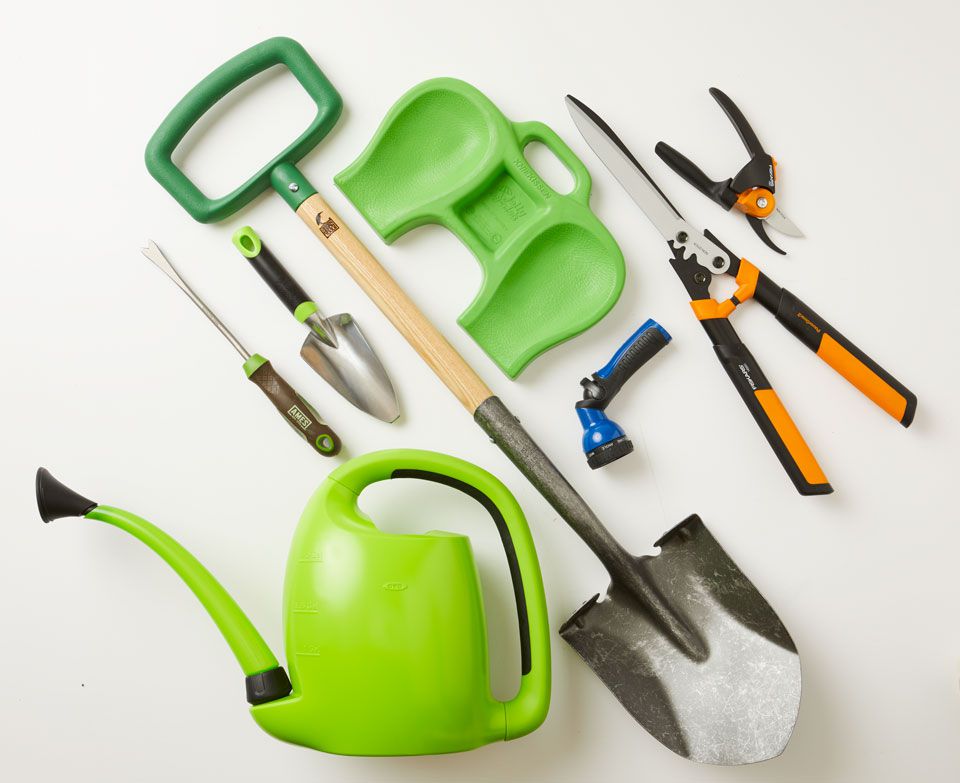
The Perfectionist Gardener’s Obsession
Pursuing Excellence
For the perfectionist gardener, cleaning garden tools is an art form, and they approach it with meticulous attention to detail. These gardeners take pride in their tools and go to great lengths to keep them in pristine condition. They start by meticulously inspecting each tool, using a magnifying glass if necessary to spot even the smallest speck of dirt or rust. Then, they use specialized cleaning agents and tools to remove buildup and restore their tools to like-new condition. They pay special attention to every detail, ensuring that no corner or crevice is overlooked. After cleaning, they carefully dry their tools and store them in a climate-controlled environment to prevent rust and corrosion. By adopting this meticulous cleaning routine, perfectionist gardeners ensure that their tools are always in perfect condition, ready to tackle any task in the garden with precision and ease.
Perfectionist gardeners view cleaning garden tools as an opportunity to showcase their dedication to their craft and their commitment to excellence. They understand that well-maintained tools not only perform better but also reflect their passion for gardening. These gardeners approach cleaning with an obsessive attention to detail, leaving no stone unturned in their quest for perfection. They meticulously inspect each tool, using specialized tools and cleaning agents to remove even the smallest traces of dirt or rust. They take their time, ensuring that every surface is cleaned and polished to perfection. After cleaning, they store their tools in a carefully controlled environment, protecting them from the elements and ensuring that they remain in pristine condition. By adopting this meticulous approach to cleaning, perfectionist gardeners ensure that their tools are always ready for the demands of the garden, allowing them to achieve their gardening goals with precision and ease.
